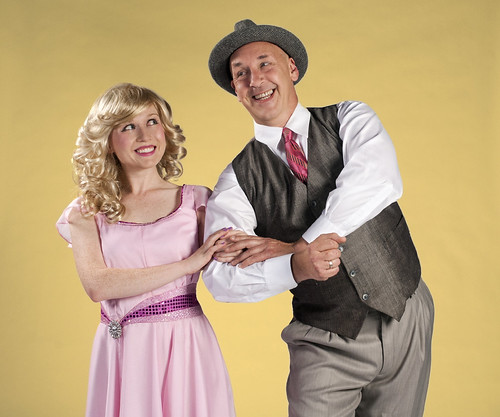 You have to believe we are magic: Chloe Condon is Kira, the muse from Mt. Olympus, and Joe Wicht is real estate mogul Daniel in the New Conservatory Theatre Center production of Xanadu: The Musical. Photo by Lois Tema Photography
You have to believe we are magic: Chloe Condon is Kira, the muse from Mt. Olympus, and Joe Wicht is real estate mogul Daniel in the New Conservatory Theatre Center production of Xanadu: The Musical. Photo by Lois Tema Photography
When I called playwright Douglas Carter Beane to interview him for a San Francisco Chronicle story on Xanadu: The Musical at the New Conservatory Theatre Center, he happened to be taking a break from rehearsals for his latest Broadway show, Lysistrata Jones. That musical, a hip, funny adaptation of the Aristophanes classic, happens to rehearse in the same building as the Foxwoods Theatre, home to Broadway’s notorious web slinger, Spider-Man: Turn Off the Dark.
 With his ear pressed to his cell phone, Beane surveyed the crowded sidewalk and quipped, “I hope people don’t think I’m buying tickets.”
With his ear pressed to his cell phone, Beane surveyed the crowded sidewalk and quipped, “I hope people don’t think I’m buying tickets.”
Lyssie Jay, as Beane calls it, opens Wednesday (Dec. 14) after a successful run off-Broadway. It’s something of a family affair what with Beane’s partner, Lewis Flinn, providing the music and lyrics and Beane providing the book. The story has been updated so that instead of Greek women withholding sex until the men stop warring, it’s now a college cheerleading squad withholding nookie from a losing basketball team until they start winning some games.
While San Francisco audiences get a gander at what magic Beane worked with Xanadu (he wrote the book), Beane is essentially storming Manhattan. There’s buzz about his libretto revision for Rodgers and Hammerstein’s Cinderella popping up next year. He’s also casting for The Big Time, what he describes as his “feel-good musical about terrorism.” The show is slated for off-Broadway. “The G-8 is on a cruise ship that’s taken over by terrorists, and the lounge singers on the ship end up saving the day,” Beane explains. “How would the Freed Unit at MGM back in the day deal with terrorism? It’s silly but very moving. I’m quite proud of it.”
He’s also working on a new play called The Nance for Nathan Lane (“the great genius Nathan Lane” as Beane puts it). “It’s a real period gay play I’ve been wanting do for a while,” Beane says. “It’s set in the world of burlesque and it’s about the gay stock comedy character, the nance.”
As if Beane weren’t busy enough (did I mention he also did all the re-writes on Sister Act: The Musical?), he and Flinn are raising two kids, Cooper, 7, and Gabby, 5. The secret to his success, he says, is: “A cute partner who is significantly younger. The children are also younger. Even our dog is younger.”
Visit the official website for Lysistrata Jones here.
Read my San Francisco Chronicle feature on NCTC’s Xanadu here.
FOR MORE INFORMATION
Xanadu: The Musical continues through Jan. 15 at the New Conservatory Theatre Center, Decker Theatre, 25 Van Ness Ave., San Francisco. Tickets are $25 to $45. Call 415-861-8972 or visit www.nctcsf.org.

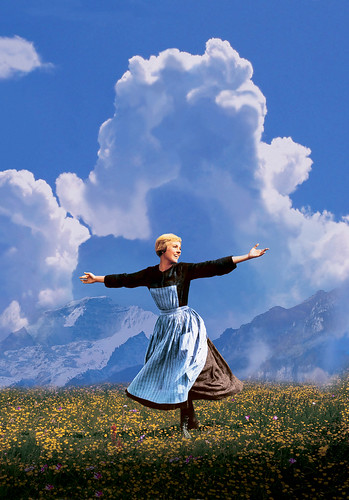



 You’ve got a story that goes nowhere, a primary romantic couple that hits a few road blocks but ends up together, a cap-tossing graduation scene and the must unrealistic school musical of all time (in Grease 2 it involves the wretchedly wonderful production number “Girl for All Seasons”). You’ve also got a leading man in a salvage yard (in Grease 2, Maxwell Caulfield is building the ultimate chick-magnet motorcycle) and a song that echoes one of the worst numbers ever: “Who’s That Guy?” (in HSM3 the line occurs during a paean to prom night called “A Night to Remember,” which also happens to be the name of a movie about the Titanic, but I digress).
You’ve got a story that goes nowhere, a primary romantic couple that hits a few road blocks but ends up together, a cap-tossing graduation scene and the must unrealistic school musical of all time (in Grease 2 it involves the wretchedly wonderful production number “Girl for All Seasons”). You’ve also got a leading man in a salvage yard (in Grease 2, Maxwell Caulfield is building the ultimate chick-magnet motorcycle) and a song that echoes one of the worst numbers ever: “Who’s That Guy?” (in HSM3 the line occurs during a paean to prom night called “A Night to Remember,” which also happens to be the name of a movie about the Titanic, but I digress). Zac Efron and Vanessa Hudgens are as appealing as ever, though Efron’s charisma pretty much blows pretty Vanessa off the screen. Ashley Tisdale, with her sassy new nose, has fun with her ultra-bitchy character, Sharpay, though on the big screen it becomes quite apparent that Ms. Tisdale is not a great actress, nor does she have a whole lot of comic flair. Lucas Grabeel (right) as Sharpay’s, twin, Ryan, is mostly consigned to reaction shots as Sharpay flounces about, flipping her extensions and making the most of her cutie cute outfits. I’m a little sorry Ryan doesn’t get to fully come out of the closet and take a boy to prom. Instead he takes Kelsi(Olesya Rulin), the “composer” of the school shows. I’m not sure if that means Kelsi is a budding lesbian and the two recognize each other through the golden high school haze or Kelsi is doomed to a life of fag haggery. I’m hoping for the former. For the best analysis of HSM3 as gay metaphor, check out Prince Gomolvilas’ Bamboo Nation report
Zac Efron and Vanessa Hudgens are as appealing as ever, though Efron’s charisma pretty much blows pretty Vanessa off the screen. Ashley Tisdale, with her sassy new nose, has fun with her ultra-bitchy character, Sharpay, though on the big screen it becomes quite apparent that Ms. Tisdale is not a great actress, nor does she have a whole lot of comic flair. Lucas Grabeel (right) as Sharpay’s, twin, Ryan, is mostly consigned to reaction shots as Sharpay flounces about, flipping her extensions and making the most of her cutie cute outfits. I’m a little sorry Ryan doesn’t get to fully come out of the closet and take a boy to prom. Instead he takes Kelsi(Olesya Rulin), the “composer” of the school shows. I’m not sure if that means Kelsi is a budding lesbian and the two recognize each other through the golden high school haze or Kelsi is doomed to a life of fag haggery. I’m hoping for the former. For the best analysis of HSM3 as gay metaphor, check out Prince Gomolvilas’ Bamboo Nation report 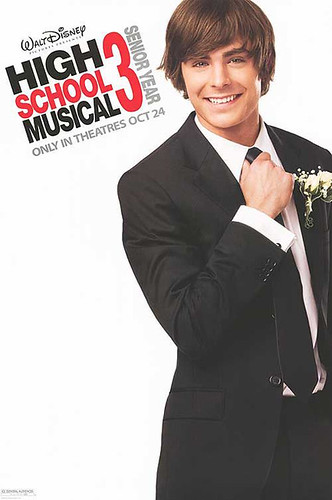 , the remake of which happens to be a future Efron project. Sure Efron’s got the goods, but Bleu matches him in the charisma department, and of all the HSM stable other than Efron, this is the guy to watch.
, the remake of which happens to be a future Efron project. Sure Efron’s got the goods, but Bleu matches him in the charisma department, and of all the HSM stable other than Efron, this is the guy to watch.
 There’s a scene of WALL-E trying to dance with a hubcap for a hat that is priceless. But that’s just a prelude to the robot’s actual chance to fall in love with EVE, a slick droid sent down from the mother ship (where all the too-fat humans are carried on floating chairs, eyes glued to the screens in front of their faces). Neither of the ‘bots really speaks, so the true expression of their feelings (again, why these robots have developed feelings is mysterious, but intriguing) is by touching, or holding hands, just like Irene and Cornelius do in Hello, Dolly!
There’s a scene of WALL-E trying to dance with a hubcap for a hat that is priceless. But that’s just a prelude to the robot’s actual chance to fall in love with EVE, a slick droid sent down from the mother ship (where all the too-fat humans are carried on floating chairs, eyes glued to the screens in front of their faces). Neither of the ‘bots really speaks, so the true expression of their feelings (again, why these robots have developed feelings is mysterious, but intriguing) is by touching, or holding hands, just like Irene and Cornelius do in Hello, Dolly!
 And Herman, whose music is so integral to one of the best movies of the year (animated or otherwise), is getting the kind of exposure he deserves. He told the Associated Press: “I’m still blown away by the fact that two songs of mine that are close to 50 years old have been used as the underpinning of the movie.”
And Herman, whose music is so integral to one of the best movies of the year (animated or otherwise), is getting the kind of exposure he deserves. He told the Associated Press: “I’m still blown away by the fact that two songs of mine that are close to 50 years old have been used as the underpinning of the movie.”


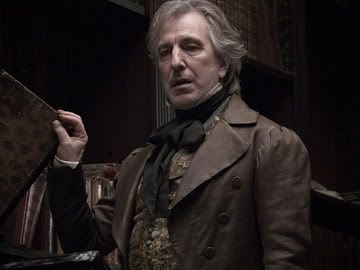

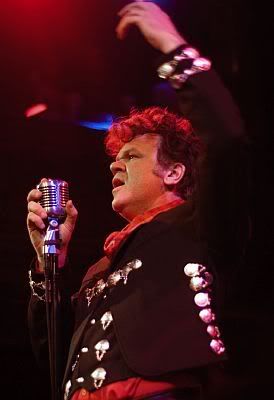

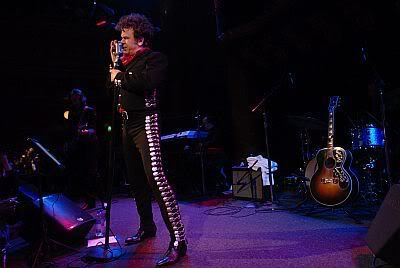
 In the realm of books about theater, this year’s standout comes from San Mateo native Thomas Schumacher, who also happens to be the president of Disney Theatrical, the producer of such hits as The Lion King and Mary Poppins. Schumacher’s How Does the Show Go On? An Introduction to the Theater (Disney Editions, $19.95) is geared toward the young theatergoer (ages 9 to 12), but it’s a hugely entertaining look at the entire theatrical picture, from the beginning of a show to the most intricate details of daily production.
In the realm of books about theater, this year’s standout comes from San Mateo native Thomas Schumacher, who also happens to be the president of Disney Theatrical, the producer of such hits as The Lion King and Mary Poppins. Schumacher’s How Does the Show Go On? An Introduction to the Theater (Disney Editions, $19.95) is geared toward the young theatergoer (ages 9 to 12), but it’s a hugely entertaining look at the entire theatrical picture, from the beginning of a show to the most intricate details of daily production. The Bay Area can’t get enough of the musical Jersey Boys. For the most avid fans, there is, of course, a coffee-table book. Jersey Boys: The Story of Frankie Vallie and the Four Seasons (Broadway, $40) contains the show’s libretto, lots of photos and a thorough guide to the real Four Seasons and their Broadway counterparts.
The Bay Area can’t get enough of the musical Jersey Boys. For the most avid fans, there is, of course, a coffee-table book. Jersey Boys: The Story of Frankie Vallie and the Four Seasons (Broadway, $40) contains the show’s libretto, lots of photos and a thorough guide to the real Four Seasons and their Broadway counterparts. The hottest show on Broadway is the multi-Tony Award-winning Spring Awakening. Fans already have memorized the great cast album, so give them Spring Awakening (Theatre Communications Group, $13.95), the libretto (by Steven Sater) and a new adaptation of Frank Wedekind’s original play by novelist Jonathan Franzen (Faber and Faber, $11.70). Franzen hates the musical, by the way, so it’s interesting to see how the play and the musical diverge.
The hottest show on Broadway is the multi-Tony Award-winning Spring Awakening. Fans already have memorized the great cast album, so give them Spring Awakening (Theatre Communications Group, $13.95), the libretto (by Steven Sater) and a new adaptation of Frank Wedekind’s original play by novelist Jonathan Franzen (Faber and Faber, $11.70). Franzen hates the musical, by the way, so it’s interesting to see how the play and the musical diverge.
 Once (20th Century Fox, $29.99), a fascinating and musically rich love story about an Irish street musician and an interesting woman he meets by chance; Colma: The Musical (Lionsgate, $27.98), a locally grown musical with catchy tunes and a better-than-average cast of characters. The best of the big-ticket DVD items this year is The Noel Coward Collection ($79.98 BBC/Warner), a veritable treasure trove of Cowardly delights. The set contains seven discs and runs some 19 hours (plus another 12 hours of bonus material that includes interviews, radio plays and more). The plays included are Private Lives (with the delectable Penelope Keith), Hay Fever, Design for Living, Present Laughter, A Song at Twilight, Mr. and Mrs. Edgehill and Tonight at 8:30.
Once (20th Century Fox, $29.99), a fascinating and musically rich love story about an Irish street musician and an interesting woman he meets by chance; Colma: The Musical (Lionsgate, $27.98), a locally grown musical with catchy tunes and a better-than-average cast of characters. The best of the big-ticket DVD items this year is The Noel Coward Collection ($79.98 BBC/Warner), a veritable treasure trove of Cowardly delights. The set contains seven discs and runs some 19 hours (plus another 12 hours of bonus material that includes interviews, radio plays and more). The plays included are Private Lives (with the delectable Penelope Keith), Hay Fever, Design for Living, Present Laughter, A Song at Twilight, Mr. and Mrs. Edgehill and Tonight at 8:30. The best of the bunch is Lauren Kennedy’s Here and Now, a marvelous collection of show music and pop. Album highlight is Andrew Lippa’s “Spread a Little Joy,” followed closely by Jason Robert Brown’s “In This Room” and Adam Guettel‘s “Through the Mountain” (from Floyd Collins). Kennedy’s voice is so vibrant — at times so Streisandian — it’s irresistible.
The best of the bunch is Lauren Kennedy’s Here and Now, a marvelous collection of show music and pop. Album highlight is Andrew Lippa’s “Spread a Little Joy,” followed closely by Jason Robert Brown’s “In This Room” and Adam Guettel‘s “Through the Mountain” (from Floyd Collins). Kennedy’s voice is so vibrant — at times so Streisandian — it’s irresistible. PS Classics’ Songwriter Series with the Library of Congress’ latest offering is a doozy: Jonathan Larson: Jonathan Sings Larson. The composer of Rent, who died tragically the night before his show opened, is heard singing demos and performing live, and the disc paints an incredible portrait of an artist full of talent, humor and ambition. The accompanying DVD features four live performances from Larson’s gig at New York’s Village Gate.
PS Classics’ Songwriter Series with the Library of Congress’ latest offering is a doozy: Jonathan Larson: Jonathan Sings Larson. The composer of Rent, who died tragically the night before his show opened, is heard singing demos and performing live, and the disc paints an incredible portrait of an artist full of talent, humor and ambition. The accompanying DVD features four live performances from Larson’s gig at New York’s Village Gate.